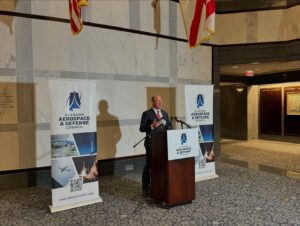Lindsey Graham says he’s told Donald Trump to ‘speak up’ on COVID vaccines
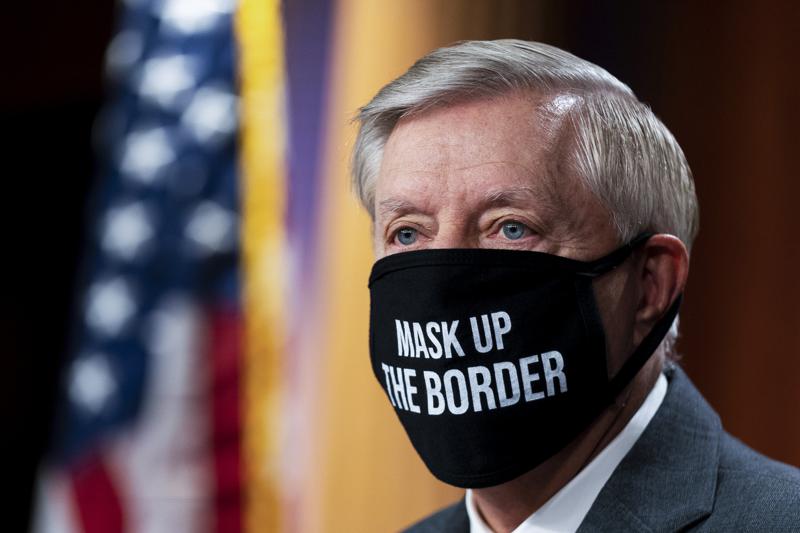
As he recovers from a breakthrough infection of the coronavirus, Sen. Lindsey Graham said Thursday that he has urged former President Donald Trump to press his supporters to get the COVID-19 vaccine, which the South Carolina Republican called “the antidote to the virus that’s wreaking havoc on our hospitals.” “I’ve urged him to be aggressive and say, ‘Take the vaccine,’” Graham said in an extensive interview with The Associated Press, his first since disclosing this week that he had tested positive for the virus, months after being vaccinated. On Monday, Graham said he had tested positive days after gathering with a handful of Senate colleagues on Sen. Joe Manchin’s houseboat. That same night, Saturday, Graham said he began experiencing flu-like symptoms. Saying he felt “achy and kind of yucky” through the weekend, Graham said Thursday that his symptoms had been steadily improving, although Monday and Tuesday were “pretty tough days.” He said he believed his symptoms would have been much worse had he not been vaccinated. “It went from sort of a mild sinus infection until just a full-blown, feeling like crap,” Graham told AP. Graham declined to talk about the Manchin event on Thursday, except to say that “everybody there was vaccinated.” Long a proponent of vaccination, Graham received his shots in December. Asked Thursday if President Joe Biden planned to highlight pro-vaccine comments from Republicans like Graham, White House press secretary Jen Psaki said vaccination “is not political to us” but added, “We think it’s great that he’s out there talking about the impact of the vaccine.” Graham is a longtime ally of Trump, who received the vaccine earlier this year. This week, former Health and Human Services Secretary Alex Azar wrote in an op-ed for The New York Times that he wished that Trump had gotten the shot publicly so that his supporters could “see how much trust and confidence he has” in the vaccines. In March, Trump said on Fox News that he would recommend vaccination to “a lot of people that don’t want to get it, and a lot of those people voted for me.” But last month, at a rally in Phoenix, Trump told supporters that he felt some people were not taking the vaccine because they “don’t trust” President Joe Biden and stressed people’s “freedoms 100 percent” to do what they felt best. On Thursday, Graham said he had just gotten off the phone with Trump, who had been checking on him every day during his illness. He applauded Trump’s work to develop the vaccine and said he saw vaccinations as necessary for the country to regain its footing. “He’s very proud of that accomplishment,” Graham said. “From a conservative person’s point of view, we should do all we can as a nation to get our economy back up and running and to protect our way of life.” Recognizing that taking the vaccine might be a “sacrifice” for some, Graham said the task paled in comparison with others that have been required of Americans in the past. “No one’s being asked to go off to fight radical Islam or fight a foreign enemy. We’re being asked to make responsible medical decisions,” Graham said. “Take the vaccine.” Republished with the permission of the Associated Press.
Vaccine rollout could ease crisis, but who gets it first?
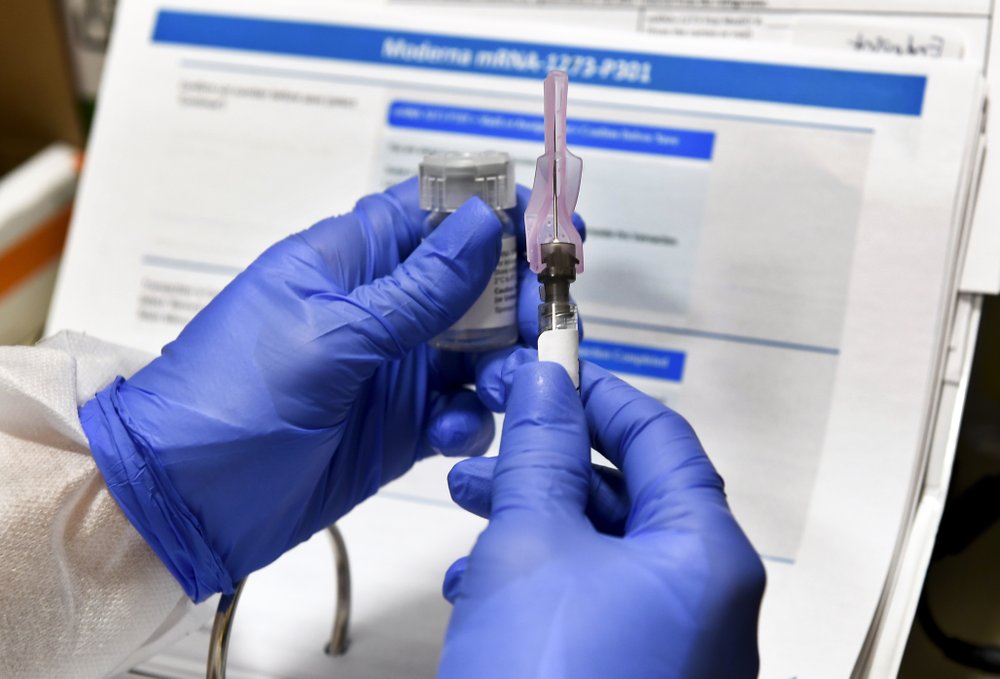
Getting a COVID-19 vaccine to the right people could change the course of the pandemic in the United States. But who are the right people? As the decision looms for President-elect Joe Biden’s incoming administration, a new analysis argues for targeting the first vaccines to the same low-income Black, Hispanic, and Native American households that have disproportionately suffered from the coronavirus. But no one at the federal level has committed to the idea, which would be a significant shift from the current population-based method adopted by Operation Warp Speed. “It’s not just a math problem. It’s a question of implementing a major social justice commitment,” said Harald Schmidt, a medical ethicist at the University of Pennsylvania, who compared the strategies with colleagues from the Massachusetts Institute of Technology and Boston College. The Associated Press conducted an independent analysis of the findings and worked with the team to estimate how many disadvantaged people would benefit. If the shots get to the right people, Schmidt argues, the benefits could extend to the entire nation: Fewer people would get sick, hospital capacity would improve and more of the economy could reopen. Lives would be saved. In October, a panel advising the federal government suggested setting aside 10% of the vaccine supply to distribute as an extra boost to the states with greater shares of disadvantaged groups. But the idea from the National Academies of Sciences, Engineering, and Medicine has been largely ignored. The strategy could get vaccines to 12.3 million more vulnerable people in the early phases of distribution compared with the population-based method, the AP found in a collaboration with Schmidt’s team. Any distribution system will reverberate across the nation, with consequences for everyone. It will be shaped by the early steps of federal officials and by state leaders who will allocate vaccines in the months when there is not enough supply to go around. California and several other states have stated that they intend to direct some of their supply to disadvantaged neighborhoods, but there’s no national strategy to do so. The director of the Centers for Disease Control and Prevention, Dr. Robert Redfield, said Thursday that he looks forward to future recommendations that prioritize people 70 and older who live with younger relatives. “Often our Hispanic, Black, and tribal nations families care for their elderly in multigenerational households, and they are also at significant risk,” Redfield said in a statement. Redfield has approved initial recommendations that put health care personnel and residents of long-term care facilities at the front of the line. No vaccine has been authorized for use yet in the U.S., but the preliminary results of ongoing clinical trials have been encouraging for Moderna’s and Pfizer’s candidates. If the Food and Drug Administration allows emergency use of one or both of those vaccines, there will be limited, rationed supplies before the end of the year. Operation Warp Speed officials announced last week that states would receive vaccines in proportion to their adult populations, at least for the first 6.4 million doses and possibly beyond. “We thought it best to keep it simple,” Health and Human Services Secretary Alex Azar said. “We thought that would be the fairest approach, the most consistent.” Fairness isn’t that simple, Schmidt said. “Allocating vaccines to states according to population does not help reduce inequity,” Schmidt said. Vulnerable people will face more rationing in states such as New Mexico that have higher shares of vulnerable people. “That’s not fair.” Schmidt worked with Parag Pathak, Tayfun Sonmez, and M. Utku Unver, pioneers in devising how to distribute resources in high-stakes systems such as school choice and organ donation. The researchers shared their underlying data with the AP. Their paper was posted online ahead of publication and has not been reviewed by other researchers. The analysis shows 15 states and Washington, D.C., have the largest shares of vulnerable, low-income minorities. These worse-off populations make up more than 25% of the states’ total populations. Those states stand to gain the most from a distribution method that sets aside a 10% national reserve. A federal set-aside is not the only way to get vaccine to vulnerable neighborhoods. In their vaccination plans, 18 states have said they will consider race and income as they map out vaccine distribution. Tennessee plans to reserve 10% of its vaccines for use in targeted areas with high scores on a measurement known as the social vulnerability index, which is based on census data that incorporates race, poverty, crowded housing, and other factors. The index was developed by the CDC to help identify communities that may need support in emergencies such as hurricanes. Vaccines will remain in limited supply for a time after Biden is sworn in, so rationing will continue into the spring. “I think it’s early to say what the Biden and Harris administration will ultimately do on that front,” said Dr. Marcella Nunez-Smith, associate dean for health equity research at Yale University’s medical school. She co-chairs Biden’s advisory board on the pandemic and has been a leading voice on reducing health disparities for the transition. Nunez-Smith said there are several data-based models to consider for distributing vaccines to communities hardest hit by the virus. “Thinking about equity has to be a top priority and cannot be an afterthought in the work,” she said. Republished with the permission of the Associated Press.
‘America is back’: Joe Biden pushes past Donald Trump era with nominees

Declaring “America is back,” President-elect Joe Biden introduced his national security team on Tuesday, his first substantive offering of how he’ll shift from Trump-era “America First” policies by relying on experts from the Democratic establishment to be some of his most important advisers. “Together, these public servants will restore America globally, its global leadership and its moral leadership,” Biden said from a theater in his longtime home of Wilmington, Delaware. “It’s a team that reflects the fact that America is back, ready to lead the world, not retreat from it.” The nominees are all Washington veterans with ties to former President Barack Obama’s administration, a sign of Biden’s effort to resume some form of normalcy after the tumult of President Donald Trump’s four years in office. There are risks to the approach as Republicans plan attacks and progressives fret that Biden is tapping some officials who were too cautious and incremental the last time they held power. Still, Biden’s nominees were a clear departure from Trump, whose Cabinet has largely consisted of men, almost all of them white. Biden’s picks included several women and people of color, some of whom would break barriers if confirmed to their new positions. They stood behind Biden and Vice President-elect Kamala Harris spaced apart and wearing masks to prevent the spread of the coronavirus, a contrast with Trump and many of his top aides who have largely eschewed facial coverings. The president-elect’s team includes Antony Blinken, a veteran foreign policy hand well-regarded on Capitol Hill whose ties to Biden go back some 20 years, for secretary of state; lawyer Alejandro Mayorkas to be homeland security secretary; veteran diplomat Linda Thomas-Greenfield to be U.S. ambassador to the United Nations; and Obama White House alumnus Jake Sullivan as national security adviser. Avril Haines, a former deputy director of the CIA, was picked to serve as director of national intelligence, the first woman to hold that post, and former Secretary of State John Kerry will make a curtain call as a special envoy on climate change. Kerry and Sullivan’s position will not require Senate confirmation. With the Senate’s balance of power hinging on two runoff races in Georgia that will be decided in January, some Senate Republicans have already expressed antipathy to Biden’s picks as little more than Obama world retreads. Sen. Tom Cotton, an Arkansas Republican and potential 2024 presidential candidate, argued that Biden is surrounding himself with people who will go soft on China. Sen. Marco Rubio, another potential White House hopeful, who sits on the Senate Foreign Relations Committee that will consider Blinken’s nomination, broadly wrote off the early selections. “Biden’s cabinet picks went to Ivy League schools, have strong resumes, attend all the right conferences & will be polite & orderly caretakers of America’s decline,” Rubio tweeted. Biden said his choices “reflect the idea that we cannot meet these challenges with old thinking and unchanged habits.” He said he tasked them with reasserting global and moral leadership, a clear swipe at Trump, who has resisted many traditional foreign alliances. The president-elect said he was “struck” by how world leaders have repeatedly told him during congratulatory calls that they look forward to the U.S. “reasserting its historic role as a global leader” under his administration. Trump, who has debated recently whether to mount another presidential campaign in 2024, appeared to defend his worldview on Tuesday. “We shouldn’t go away from that — America First,” he said at the annual turkey pardon, a lighthearted pre-Thanksgiving White House tradition. While Trump expected total loyalty from his Cabinet and chafed at pushback from advisers, Biden said he expected advisers to tell me “what I need to know, not what I want to know.” Further drawing a contrast with Trump, Haines said she accepted Biden’s nomination knowing that “you value the perspective of the intelligence community, and that you will do so even when what I have to say maybe inconvenient or difficult.” Haines said she has “never shied away from speaking truth to power” and added, “that will be my charge as director of national intelligence.” Biden celebrated the diversity of his picks, offering a particularly poignant tribute to Thomas-Greenfield. The eldest of eight children who grew up in segregated Louisiana, she was the first to graduate from high school and college in her family. The diplomat, in turn, said that with his selections, Biden is achieving much more than a changing of the guard. “My fellow career diplomats and public servants around the world, I want to say to you, ‘America is back, multilateralism is back, diplomacy is back,’” Thomas-Greenfield said. Mayorkas, who is Cuban American, also offered a nod to his immigrant upbringing. “My father and mother brought me to this country to escape communism,” he said. “They cherished our democracy, and were intensely proud to become United States citizens, as was I.” But Mayorkas might pose the most difficult confirmation challenge from Biden’s early round of nominees. The Senate previously confirmed him in December 2013 by a party-line vote to be the deputy secretary of Homeland Security. The Senate was controlled by Democrats then, and all of the chamber’s Republicans voted against his confirmation mainly because he was then under investigation by the Obama-appointed inspector general in that department. At the time, the Senate historian’s office said it was unprecedented for the Senate to vote on a nominee who was under investigation. The inspector general, John Roth, found in March 2015 that Mayorkas, as director of the U.S. Citizenship and Immigration Services, appeared to give special treatment to certain people as part of the visa program that gives residency preference to immigrants who agree to invest in the U.S. economy. Meanwhile, there were signs on Tuesday that the stalled formal transition of power is now underway. Biden’s team now is in contact with all federal agencies, according to a transition official who spoke on condition of anonymity to describe developments that have not been announced. At the Pentagon, Kash Patel, chief of staff
Donald Trump vents about election as agencies aid Joe Biden transition

President Donald Trump insisted Tuesday that he is not giving up his fight to overturn the election results, but across the federal government, preparations were beginning in earnest to support President-elect Joe Biden’s incoming administration. Within hours of the General Services Administration’s acknowledgment Monday evening of Biden’s victory in the Nov. 3 election, career federal officials opened the doors of agencies to hundreds of transition aides ready to prepare for his Jan. 20 inauguration. And on Tuesday, Trump signed off on allowing Biden to receive the presidential daily brief, the highly classified briefing prepared by the nation’s intelligence community for the government’s most senior leaders. An administration official said logistics on when and where Biden will first receive the briefing were still being worked out. Biden, in an interview with “NBC Nightly News,” said he was also working out a meeting with the White House’s coronavirus task force and vaccine distribution effort. “So I think we’re going to not be so far behind the curve as we thought we might be in the past,” he said. “And there’s a lot of immediate discussion, and I must say, the outreach has been sincere. There has not been begrudging so far. And I don’t expect it to be. So yes, it’s already begun.” By Tuesday afternoon, the Biden transition had been in contact with all federal agencies about transition planning, according to a transition official. But Trump, who has not formally conceded to Biden — and may never — continued to sow doubt about the vote, despite his own administration’s assessment that it was conducted without widespread fraud, misconduct, or interference. The president has maintained a low profile since his defeat. He made a quick appearance in the briefing room on Tuesday to deliver just over one minute of remarks on the Dow Jones Industrial Average trading at record levels and later delivered the traditional pre-Thanksgiving turkey pardon in the White House Rose Garden. He has not taken questions from journalists in weeks. He did not hold back on Twitter regarding the election results. “Remember, the GSA has been terrific, and (Administrator) Emily Murphy has done a great job, but the GSA does not determine who the next President of the United States will be,” Trump tweeted Tuesday morning. His legal team continued to mount seemingly futile challenges to the votes in battleground states. Murphy acted after Michigan certified Biden’s victory in the battleground state on Monday, and a federal judge in Pennsylvania tossed a Trump campaign lawsuit on Saturday seeking to prevent certification in that state. Pennsylvania certified its results, and its 20 electors for Biden, on Tuesday morning, followed hours later by Nevada. It also came as an increasing number of Republicans were publicly acknowledging Biden’s victory, after weeks of tolerating Trump’s baseless claims of fraud. The Republican president had grown increasingly frustrated with the flailing tactics of his legal team. In recent days, senior Trump aides, including chief of staff Mark Meadows and White House counsel Pat Cipollone had also encouraged Trump to allow the transition to begin, telling the president he didn’t need to concede but could no longer justify withholding support to the Biden transition. Late Monday, Meadows sent a memo to White House staffers saying that their work was not yet finished and that the administration would “comply with all actions needed to ensure the smooth transfer of power,” according to a person who received it. At the same time, he warned staffers who are not specifically authorized to interact with the Biden team against contact with the incoming administration. Health and Human Services Secretary Alex Azar told reporters Tuesday that within hours of GSA’s ascertainment of Biden’s victory, his agency’s top career official was in contact with the Biden team on coordinating briefings, including on the Trump administration’s planning to distribute vaccines for COVID-19. “We are immediately getting them all of the pre-prepared transition briefing materials,” Azar said. “We will ensure coordinated briefings with them to ensure they’re getting whatever information that they feel they need.” The official managing the Pentagon’s transition work with the Biden landing team said that the first meeting was held virtually on Tuesday morning and that he expected daily meetings to come — some virtually and some in person. The official, Tom Muir, told reporters that normal accommodations for the Biden team have been made, including the provision of briefing materials, video-teleconferencing capabilities, and office space inside the Pentagon. “HUD career officials have begun the process of scheduling briefings with the Biden transition team in response to their requests,” said a spokesperson for the Department of Housing and Urban Development. GSA’s move frees up millions of dollars in federal support for the Biden transition and gives his team access to additional federal office space and support services, including computers, phones, and secure briefing rooms. A day after Trump said his administration should begin working with Biden’s team, Republican allies filed two more lawsuits attempting to stop the certification in two battleground states. One in Minnesota was swiftly rejected by a state court Tuesday before the state certified its results for Biden. Shortly after, another was filed in Wisconsin, which doesn’t certify until Dec. 1. Republished with the permission of the Associated Press.
Donald Trump threatens to move RNC without assurances from governor
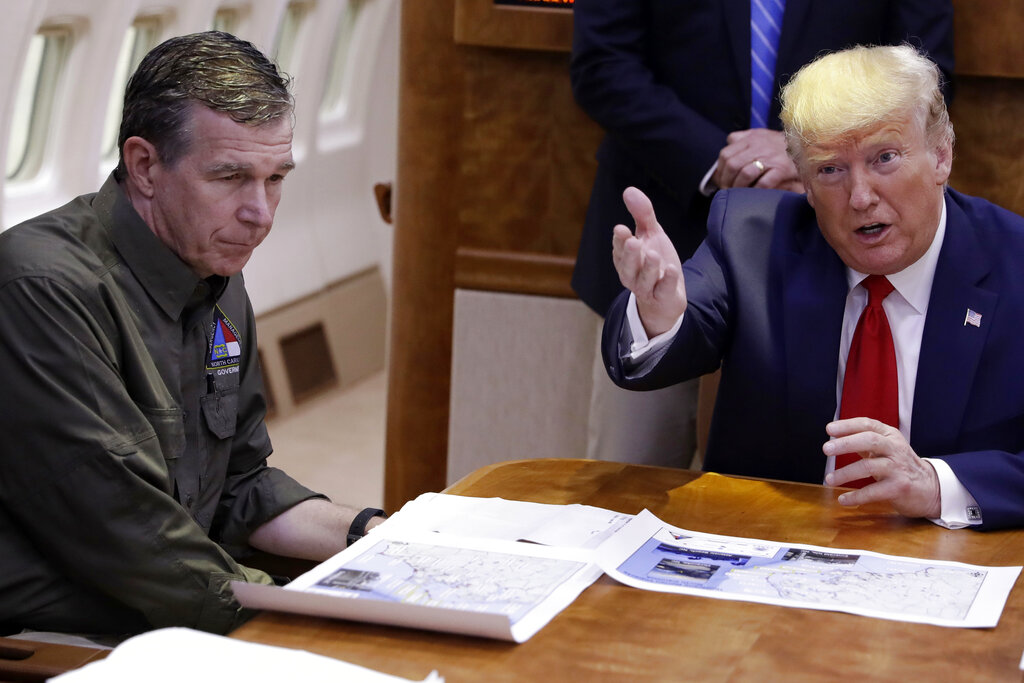
Trump’s tweets about the upcoming RNC in Charlotte come two days after North Carolina’s largest daily increase in virus cases yet.
Signs missed and steps slowed in Trump’s pandemic response
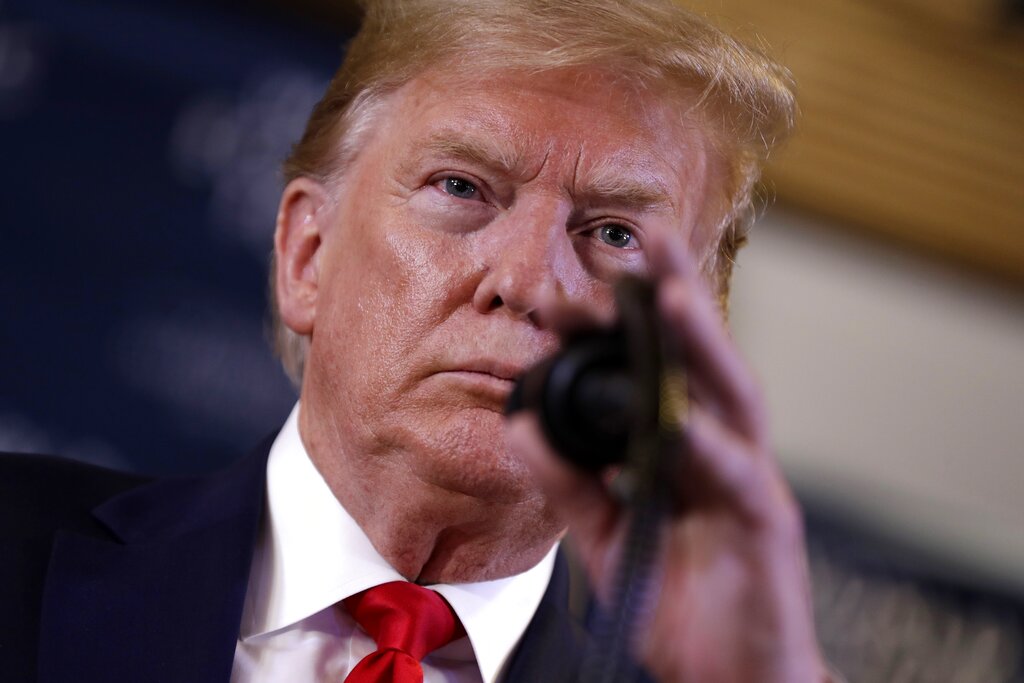
“We have it totally under control,” Trump said on CNBC.
Donald Trump faces credibility test as he plays down virus threat

Trump conducted a lengthy press conference Wednesday evening aimed at reassuring everyone that he has the crisis well in hand.
US health chief says opioid overdose deaths beginning to level off

The number of U.S. drug overdose deaths has begun to level off after years of relentless increases driven by the opioid epidemic, health secretary Alex Azar said Tuesday, cautioning it’s too soon to declare victory. “We are so far from the end of the epidemic, but we are perhaps, at the end of the beginning,” Azar said at a health care event sponsored by the Milken Institute think tank. Confronting the opioid epidemic has been the rare issue uniting Republicans and Democrats in a politically divided nation. A bill providing major funding for treatment was passed under former President Barack Obama. More money followed earlier this year under President Donald Trump. And tomorrow Trump is expected to sign bipartisan legislation passed this month that increases access to treatment, among other steps. More than 70,000 people died of drug overdoses last year, according to preliminary numbers released by the Centers for Disease Control and Prevention this summer— a 10 percent increase from 2016. Health and Human Services — the department Azar heads — is playing a central role in the government’s response. In his speech Azar suggested that multi-pronged efforts to bring the epidemic under control are paying off. He ticked off statistics showing an increase in treatment with medications such as buprenorphine and naltrexone. There’s solid evidence backing medication-assisted treatment, when used alongside counseling and ongoing support. He also noted much broader access to the overdose-reversing drug naloxone, and a documented decline in the number of people misusing prescription opioids as doctors take greater care in prescribing. Azar said that toward the end of last year and through the beginning of this year, the number of deaths “has begun to plateau.” Azar was not indicating that deaths are going down, but noting that they appear to be rising at a slower rate than previously seen. Earlier this month, the CDC released figures — also preliminary — that appear to show a slowdown in overdose deaths in late 2017 and the first three months of this year. From December to March, those figures show that the pace of the increase over the previous 12 months has slowed from 10 percent to 3 percent, according to the preliminary CDC figures. Despite the slowdown, the nation is still in the midst of the deadliest drug overdose epidemic in its history. Opioids were involved in most of the deaths, killing nearly 48,000 people last year. While prescription opioid and heroin deaths appear to be leveling off, deaths involving fentanyl, cocaine and methamphetamines are on the rise. Fentanyl is a synthetic opioid much more powerful than heroin, used as an additive in street drugs. Advocates for people struggling with addiction said they don’t believe the crisis will be quickly or easily resolved. “Even if we are beginning to make a dent in opioid deaths, we still have a really significant problem in this country with addiction, and with the hopelessness and despair so many communities feel,” said Chuck Ingoglia, senior vice president at the National Council for Behavioral Health. In President Barack Obama’s last year in office, his administration secured a commitment to expand treatment and Congress provided $1 billion in grants to states. Trump declared the opioid epidemic a national emergency. Two major funding bills have passed under his watch. While Trump got headlines with his call for using the death penalty against major drug dealers, his administration has built on the treatment approach that Obama favored. The Medicaid expansion in Obama’s Affordable Care Act has also played a critical role, paying for low-income adults to go into treatment. A recent Associated Press analysis showed that states that expanded Medicaid are spending their new opioid grant money from Congress more judiciously, going beyond basics like treatment for people in crisis. Trump tried to repeal the Medicaid expansion, but failed. Advocates for treatment say that they’re pleased that more and more addiction is considered a disease and not a sign of moral weakness. But they say the U.S. has a long way to go build what they call an “infrastructure of care,” a system that incorporates prevention, treatment and recovery. In an interview with The Associated Press this summer, a CDC expert said the overdose death numbers appear to be shifting for the better, but it’s too soon to draw firm conclusions. Month-to-month data show a leveling off in the number of deaths, said Bob Anderson, a senior statistician with the National Center for Health Statistics. However, those numbers are considered preliminary, since death investigations have not been completed in all cases. “It appears at this point that we may have reached a peak and we may start to see a decline,” said Anderson. “This reminds me of what we saw with HIV in the ’90s.” Final numbers for 2018 won’t be available until the end of next year and things could also get worse, not better. Republished with permission from the Associated Press.
Donald Trump signs bill for terminal patients to try unproven drugs
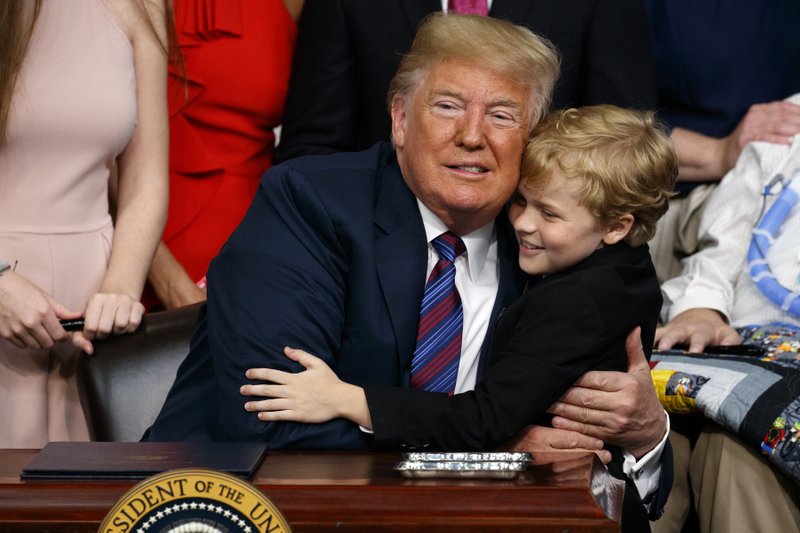
President Donald Trump signed legislation Wednesday aimed at helping people with deadly diseases try experimental treatments, calling it a “fundamental freedom” that will offer hope and save lives. Joined by families dealing with amyotrophic lateral sclerosis, also called Lou Gehrig’s disease, and other diseases, Trump signed the so-called Right to Try bill and said he never understood why the issue had lagged for years and Congress hadn’t acted sooner. “There were no options. But now you have hope — you really have hope,” Trump said. He noted that “for many years, patients, advocates and lawmakers have fought for this fundamental freedom.” The bill cleared the House last week following an emotional debate in which Republicans said it would help thousands of people in search of hope. Many Democrats said the measure was dangerous and would give patients false hope. As he distributed pens after signing the bill at a small table, 8-year-old Jordan McLinn of Indianapolis, who suffers from muscular dystrophy, waited to embrace the president, drawing laughter in the auditorium when he put his elbow on the table and held up his chin. Trump hugged McLinn and kissed him on the forehead. “He’s going to be fantastic,” the president told McLinn’s mother. The president was joined by Health and Human Services Secretary Alex Azar, Food and Drug Administration Commissioner Scott Gottlieb and some of the bill’s allies in Congress, including Sens. Ron Johnson, R-Wis., and Joe Donnelly, D-Ind. Trump had supported efforts to gain access to the treatments during his 2016 campaign. In his State of the Union address, the president said people who are terminally shouldn’t have to travel “from country to country to seek a cure.” The measure would give people diagnosed with life-threatening conditions who have exhausted treatment options the ability to gain access to unproven drugs without first getting permission from the FDA. New drugs normally undergo years of expensive testing before manufacturers seek and gain FDA approval to market them. Opponents of the bill said it would empower “fly-by-night physicians” to offer false hope and ineffective drugs to patients who are desperate for treatment. They also said that the bill created the incorrect impression that the FDA serves as a bottleneck that deprives dying patients of unproven options. Republished with the permission of the Associated Press.
Donald Trump’s prescription to reduce drug prices takes small steps

President Donald Trump’s long-promised plan to bring down drug prices would mostly spare the pharmaceutical industry he previously accused of “getting away with murder.” Instead he focuses on private competition and more openness to reduce America’s prescription pain. In Rose Garden remarks at the White House Friday, Trump called his plan the “most sweeping action in history to lower the price of prescription drugs for the American people.” But it does not include his campaign pledge to use the massive buying power of the government’s Medicare program to directly negotiate lower prices for seniors. That idea has long been supported by Democrats but is a non-starter for drugmakers and most Republicans in Congress. Democratic Rep. Lloyd Doggett of Texas dismissed Trump’s plan as “a sugar-coated nothing pill.” The administration will pursue a raft of old and new measures intended to improve competition and transparency in the notoriously complex drug pricing system. But most of the measures could take months or years to implement, and none would stop drugmakers from setting sky-high initial prices. “There are some things in this set of proposals that can move us in the direction of lower prices for some people,” said David Mitchell, founder of Patients for Affordable Drugs. “At the same time, it is not clear at all how they are going to lower list prices.” Drugmakers generally can charge as much as the market will bear because the U.S. government doesn’t regulate medicine prices, unlike most other developed countries. Trump’s list of 50 proposals, dubbed American Patients First, includes: — A potential requirement for drugmakers to disclose the cost of their medicines in television advertisements. — Banning a pharmacist “gag rule,” which prevents druggists from telling customers when they can save money by paying cash instead of using their insurance. — Speeding up the approval process for over-the-counter medications so people can buy more drugs without prescriptions. — Reconsidering how Medicare pays for some high-priced drugs administered at doctors’ offices. Those ideas avoid a direct confrontation with the powerful pharmaceutical lobby, but they may also underwhelm Americans seeking relief from escalating prescription costs. Democrats pounced on Trump for not pursuing direct Medicare negotiations, an idea he championed before reaching the White House. “This weak plan abandons the millions of hard-working families struggling with the crisis of surging drug prices,” said Democratic Leader Nancy Pelosi, in a statement. Pharmaceutical investors and analysts expressed relief after the announcement, and shares of most top drugmakers rose Friday afternoon, including Pfizer, Johnson & Johnson and Eli Lilly. “Trump had a choice today: to seek disruptive fundamental reform or to embrace more incremental steps,” wrote Terry Haines, a financial analyst, in an investment note. “Trump chose the incremental over the disruptive.” Some parts of the plan were previously proposed in the president’s budget proposal sent to Congress, including providing free generic drugs to low-income seniors and sharing rebates from drugmakers with Medicare patients. Other parts could be implemented directly by the administration. A majority of Americans say passing laws to bring down prescription drug prices should be a top priority for Trump and Congress, according to recent polling by the Kaiser Family Foundation. As a candidate, Trump railed against the pharmaceutical industry. But as president he has shied away from major changes and has staffed his administration with appointees who have deep ties to the industry. They include Health Secretary Alex Azar, a former top executive at Eli Lilly and Co., who joined Trump for Friday’s announcement. Azar and other Trump officials have hinted for weeks that the plan would, in part, “dismantle” the convoluted system of rebates between drugmakers and the health care middlemen known as pharmacy benefit managers, which negotiate price concessions for insurers, employers and other large customers. Trump called out those companies in his speech: “Our plan will end the dishonest double-dealing that allows the middleman to pocket rebates and discounts that should be passed onto consumers and patients,” Trump said. Azar later told reporters that the administration would “seek input” on doing away with drug rebates in the Medicare system to encourage more direct discounts. He gave no timeframe for more concrete steps. “It took decades to erect this very complex, interwoven system,” Azar said in a briefing following the speech. “I don’t want to overpromise that somehow by Monday there’s going to be a radical change, but there’s a deep commitment to structural change.” Public outrage over drug costs has been growing for years as Americans face pricing pressure from multiple sources: New medicines for life-threatening diseases often launch with prices exceeding $100,000 per year. And older drugs for common ailments like diabetes and asthma routinely see price hikes around 10 percent annually. Meanwhile Americans are paying more at the pharmacy counter due to health insurance plans that require them to shoulder more of their prescription costs. America has the highest drug prices in the world. The U.S. spent $1,162 per person on prescription drugs in 2015, according to the Organization for Economic Cooperation and Development. That’s more than twice the $497 per person spent in the United Kingdom, which has a nationalized health care system. Trump’s speech singled out foreign governments that “extort unreasonably low prices from U.S. drugmakers” using price controls and said U.S. trade representatives would prioritize the issue in trade deals. But experts are skeptical the U.S. can pressure foreign governments to pay more for drugs. “It’s hard to know why Germany or France or Australia would agree to something like that,” said Professor Jack Hoadley of Georgetown University’s Health Policy Institute. In the U.S., Medicare is the largest purchaser of prescription drugs, covering 60 million seniors and Americans with disabilities, but it is barred by law from directly negotiating lower prices with drugmakers. Allowing Medicare to negotiate prices is unacceptable to the powerful drug lobby, which has spent tens of millions of dollars since Trump’s inauguration to influence the Washington conversation around drug prices, including a high-profile TV advertising campaign portraying its scientists as medical trailblazers.
Donald Trump builds on Barack Obama opioid policy

Deep within President Donald Trump’s plan to combat opioid abuse, overshadowed by his call for the death penalty for some drug traffickers, is a push to expand the use of medication to treat addiction. It’s a rare instance in which Trump isn’t trying to dismantle Obama administration policies, and where fractious Republicans and Democrats in Congress have come together. Trump declared last month that “we’re making medically assisted treatment more available and affordable,” even as Congress was working to approve $1 billion for a new treatment grant program for opioids as part of the massive government funding bill. Not to offer such treatment is like “trying to treat an infection without antibiotics,” new Health and Human Services Secretary Alex Azar told the National Governors Association earlier this year. Experts have long argued that medication-assisted treatment should be the standard of care for people addicted to heroin and other opioid drugs. But acceptance lags. Cost is a barrier, as are government regulations. Some of the medications are opioids themselves and there’s no consensus on how long patients should remain in treatment. In its final year, the Obama administration pushed through Congress $1 billion for opioid crisis grants to states. Of that, $500 million was to be released last year and the other $500 million this year. States had to show that their opioid programs are based on clinical evidence, so medication-assisted treatment got a big boost. The 2018 spending bill provides another $1 billion, and the Trump administration says it will carry even more specific requirements for states to use treatment supported by clinical evidence, including medications. “The government is talking about treatment and medication-assisted treatment in a way that the government has never done before,” said Tom Hill, vice president of addiction and recovery at the National Council for Behavioral Health, which advocates for mental health and addiction treatment. Overdose deaths from heroin, synthetics like fentanyl, and prescription painkillers, reached 42,000 in 2016, according to the latest statistics. “This is being addressed as the illness that it is,” said Elinore McCance-Katz, assistant secretary of HHS for mental health and substance abuse. “Most definitely the government is acknowledging the disease of addiction as it pertains to opioids — and other substances as well — but opioids of course are an emergency.” Grants are awarded to states based on a variety of factors, including overdose deaths and the number of people who can’t find treatment. A study looking at New England by the nonprofit Institute for Clinical and Economic Review found that every dollar invested in medication treatment would return about $1.80 in savings, when factoring in society’s costs from lost productivity and crime. Vermont has been hard hit by the addiction epidemic and is among states that have previously gotten federal money for medication-assisted treatment. Its central goal is to improve access, according to a federal report. In Massachusetts, the plan is aimed in part at pregnant women and new mothers. Indiana wants to focus on rural residents. One Vermont physician, Dr. Deborah Richter, says medications have helped her patients, especially when combined with counseling. “People got back to what they were before the addiction seized them,” she said. As a doctor, “it was on a personal level so rewarding to save other mothers’ children.” Skeptics of the government emphasis on medication-assisted treatment say it’s not a cure-all. Jonathan Goyer, manager of the Anchor recovery program in Pawtucket, Rhode Island, said he sees many patients who don’t want to take medication, because they want to be free of drugs altogether. “We should be increasing medication-assisted treatment,” said Goyer. “But we should also be increasing everything else.” At the Neil Kennedy Recovery Centers in Youngstown, Ohio, outpatient director Pam Ramsey said her program emphasizes medication as an aid, not as the sole treatment. “It really is an assist to the treatment,” said Ramsey. Along with medication, treatment incorporates a version of the traditional 12-step approach to quitting, counseling sessions, group meetings, and follow-up. “Our goal is still abstinence.” Home remodeling contractor Rob Judy said he’s wrestled with heroin addiction for more than 20 years. Medication alone did not keep him drug free, nor did a faith-based program. Finally Judy signed up for comprehensive treatment at Neil Kennedy. The medication puts out “the fire of active addiction, of having to wake up and use,” said Judy. But he says that needs to be followed with counseling, peer support and follow-up care. “I believe that addiction is based on and driven by loss, and at the core of it is pain,” said Judy. “If you don’t address those issues, sooner or later you’re going to relapse.” Republished with the permission of the Associated Press.

